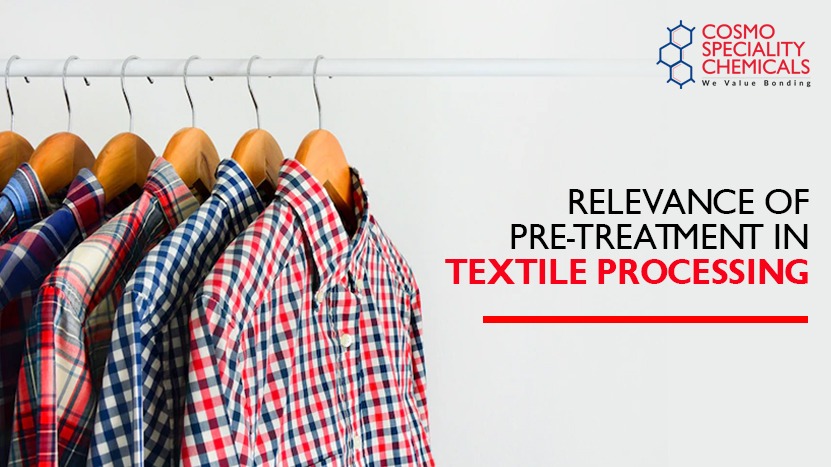
Relevance of pre-treatment in textile processing
Introduction
Textile pre-treatment is one of the most important segments in the textile industry to improve the quality of fabric and reduction in input costs. Textile pre-treatment processes consumes about 12–15% of the overall process water consumption, 60–70% of chemicals used by the wet processing industry and 10–12% of energy consumption.
The pre-treatment process is an important step in textile processing as it provides greater efficiency and economy in the subsequent stages. In pre-treatment, impurities are removed via the general cleaning process and physical methods or chemical treatments. These chemicals depend upon the type of fabric and how many impurities there are.
The popularity of colored fashion garments has given rise to the need for numerous pre-treatments based on water solubility and UV stability, leading to different oxides and complex chemical reactions. The high amount of creativity involved in dyeing and printing is also reflected in the diverse range of chemicals. Therefore, pre-treatment must provide a low dye uptake/resistance and be environmentally friendly.
Pre-treatment is the most crucial technique in the technical textile process. Color cannot be fixed on the fiber if it has no affinity to the fibers. Pre-treatment of textile creates this affinity between the color and fiber.
The Pre-treatment Process
In its most basic sense, the process of pre-treatment is to take care and clean the raw material before dyeing, bleaching or printing.
The first step sets the stage for the whole process: a good pre-treatment will ensure uniform, fast, deep and durable dyeing. Conversely, a bad pre-treatment will disrupt the other processes applied to the fabric, hence creating defects in the final output.
The pre-treatment process removes natural stains and impurities from the fibers. There are many pre-treatment methods, but in general, textile pre-treatment processes are achieved by applying a chemical solution onto the fabric to remove dirt and unwanted stains.
The importance of Pre-treatment
Achieving good dyeing results and improving the overall efficiency of the dyeing process is possible only when the fabric coming onto the dyeing machine is prepared well before dyeing. That is why pre-treatment has become so relevant in the textile processing industry.
All natural fibers contain certain impurities that must be removed before the subsequent dyeing/printing processes. Also, all fibers have to be made clean, bright, soft and remove shade variations before dyeing or printing. The objective of the pre-treatment process is to remove dirt, waxes, grease, pectin, gums etc., as well as natural waxes, fats and oils present on the fiber surface.
Pre-treatment removes sizing, helps in fiber swelling, cleans the fabric and prepares it for subsequent processes like scouring, bleaching and printing. The quality of dyes and chemicals used for pre-treatment determines the efficiency of pre-treatment and thus has a major impact on final garment quality.Pre-treatment is the first unit operation in the wet processing of textiles. Textile pre-treatment helps achieve fully white, non-toxic and dimensionally stable knitted fabric that meets the demanding requirements in the next process steps.
Being one of the important processes in textile processing, Pre-treatment is the foundation stage of the dyeing section during textile processing. Therefore, chemicals used in the pre-treatment process are called pre-treatment chemicals. The pre-treatment process decides the final quality of the fabric processed and its value addition, made in later processes such as dyeing, printing, etc.
Pre-treatment is the stage of most importance in the processing cycle; any defects that occur here cannot be rectified by the subsequent processes and will affect the final quality of the finished product.
Conclusion
Based on all the reasons mentioned above, it is safe to say that Pre-treatment in textile processing is highly important and must be done using innovative chemicals specially formulated for Pre-treatment.
At Cosmo Speciality Chemicals, we manufacture a range of pre-treatment chemicals and cleaning agents that are eco-friendly, non-toxic, and suitable for different fibers, like MICROENZ MD, an Enzymatic Desizing agent Eco Clay-a Clay Base Scouring Agent, and many more.
